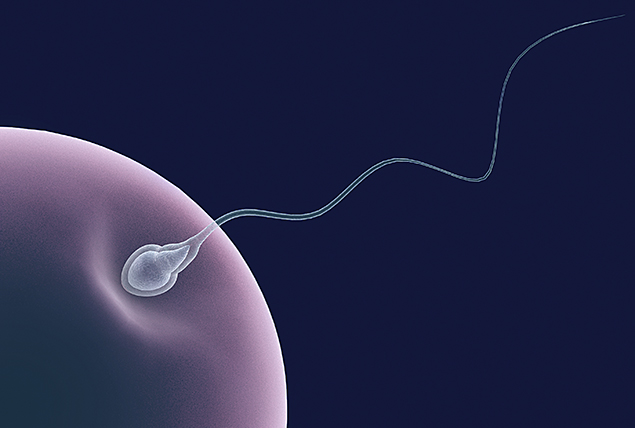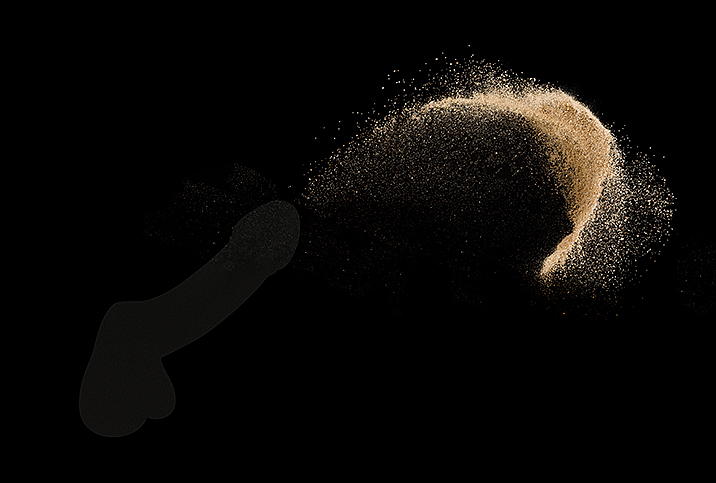Human Sperm Cells Defy Newton's Third Law

Key Points
- Human sperm cells have to swim fast and hard to reach an egg for fertilization. Most never reach their destination.
- Swimmers' ability to wriggle through thick, sticky fluid without expending much energy has perplexed scientists for years.
- Researchers at Kyoto University think they've found an explanation for sperms' whip-like tails, which can move in a way that flies in the face of Newton's third law.
Human sperm cells have one job: fertilize a female egg. But considering their fragility, their "live fast, die young" mentality and zero sense of direction, it's amazing they're able to accomplish such an important task.
The female reproductive system helps quite a bit, but sperm cells have some tricks of their own, including the ability to defy Newton's third law of motion. Researchers at Kyoto University in Japan may have finally figured out how they do that.
What is Newton's third law of motion?
Here's a quick science class refresher. Newton's third law of motion states that for every action, there's an equal and opposite reaction. Think of what happens if you knock two equal-sized marbles together on the ground or jump on a trampoline.
The rule applies to nearly all substances and living materials on Earth, with some notable exceptions, such as human sperm cells and single-celled algae. These rebels propel themselves through highly viscous fluids, which should resist their movement, with relative ease. They defy Newton's hallowed law.
What did the Kyoto University researchers find?
Kenta Ishimoto, Clément Moreau and Kento Yasuda set out to determine the mechanisms that make these organisms' movement possible, as detailed in a 2023 study published in the journal PRX Life.
Observing Chlamydomonas algae and human sperm cells under a microscope, the researchers noted that both living materials use whip-like tails known as flagella to swim. Per Newton's law, the appendages' waving movements should elicit an equal reaction from the sticky liquid around them, which should notably impede their progress.
Instead, the flagella bend and change shape to avoid the liquid's pushback with what researchers describe as an "odd elasticity." This feature alone, however, isn't enough to propel the organisms through their sticky surroundings.
Using modeling methods, researchers determined the flagella also have an "odd-bending modulus" that helps them move. These attributes allow algae and human sperm cells to survive and travel without losing much energy or requiring many nutrients.
The researchers believe their modeling methods could help better understand collective behavior principles. Additionally, the concepts of "odd elasticity" and an "odd elastic modulus" could lay the groundwork for designing small, self-assembling robots.
Recommended
- What Is the Difference Between Semen and Sperm?: The terms get used interchangeably, but semen and sperm have individual reproductive functions.
- A New Study Shows a Worldwide Decline in Sperm Count: The global average sperm count has been dropping for 50 years and at an accelerated rate since 2000.
- Do You Know These 6 Facts About Semen and Ejaculation?: Semen and the process that sends it out of the penis are both a bit complicated.
What are other weird facts about sperm?
Sperm cells' contortionist talents aren't the only thing that makes them remarkable. Check out some other mind-bending facts.
Fruit flies have bigger sperm than elephants
Sperm's size tends to be inversely related to body size, according to Phys.org, one of the largest online communities for science-minded people. For example, the sperm of the fruit fly Drosophila bifurca is 2.3 inches long—20 times the length of its own body—whereas the Asian elephant's sperm is a mere 0.002 inches long.
Human sperm averages 0.00196 inches in length, according to Nemours Children's Health.
Quantity is often the deciding factor
A fruit fly may only transfer a few to a dozen sperm to a female; thus, frequent copulation is required. An Asian elephant, by comparison, may ejaculate more than 200 billion sperm at a time, according to a study published in Proceedings of the Royal Society B.
The average human ejaculate contains about 100 million swimmers, per the United Kingdom's Family Planning Association.
Some experts believe larger animals need more, smaller sperm because there's more competition, according to the study authors. Often, larger female animals will have more than one mate in a lifetime. In contrast, a fly will just have one.
It also takes longer for sperm cells to navigate the reproductive tract of a larger female animal, study authors wrote. Since most sperm get lost or don't survive the journey, there is strength in numbers from a reproduction standpoint.
Human sperm cells' journey to reach an egg can take up to six days after sex, according to Planned Parenthood. Pregnancy itself may not occur until two to three weeks after fertilization.
7 Positions to Master Shower Sex: The shower can be a notoriously difficult place to have sex. Despite what we've seen in Hollywood movies and porn, how should you approach it?
You never run out of sperm
Human testes produce about 1,000 sperm per second as a pair, according to the University of California San Diego Health.
Even if you only have one functioning testicle, you can still produce millions of sperm per day.
Yes, sperm count—along with motility and quality—declines with age, but men never stop producing swimmers.
Pablo Picasso was 68 years old when his fourth child was born, long before in vitro fertilization (IVF) was made available to the public. More recently, Robert Deniro made headlines for welcoming a biological daughter at age 79. The oldest confirmed dad was Les Colley, an Australian man who had his ninth child, Oswald, at age 92 and 10 months, according to Guinness World Records.
The bottom line
Sperm might not look like much, especially because they're invisible to the naked eye. But they are an incredible feat of evolution.
If you're planning to conceive or just curious about how your swimmers stack up, talk to your healthcare provider.


















